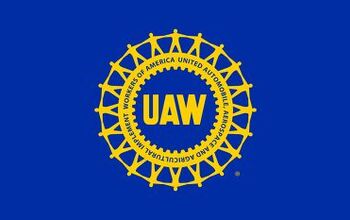Former GM Engineer: Lower-Level Management At Root Of Company's Problems
Though the Valukas report may have reaped 15 employees linked to the February 2014 ignition switch recall — including a number of senior executives — one former General Motors employee’s experience suggests doing the same to the lower levels of corporate leadership.
Jalopnik reposted a comment by a former engineer made during an op-ed about using the word “culture” in place of “people” as far as what was liable for the overall indifference expressed within the automaker. The engineer spent 10 months with GM, his employment ending at the same time the company found itself thrashed upon the rocks of the Great Recession, where he saw just how indifferent his then-employer could be.
The engineer said he spent more time in meetings that had little if anything to do with his work on the company’s eAssist hybrid system than he had doing the actual work he believed he was hired to do. Asking why his presence was always requested — especially if eAssist was not ever on the agenda — was met with admonishment by those higher on the totem pole. When the subject of doing actual work came up, they said he should spend 70 hours per week on work-related tasks without the expectation of overtime pay. Finally, upon doing his job — making a design decision for a press-in coolant tube — an alleged supervisor raged against the engineer for making the decision without having the proper authority to do so, claiming his prior experience meant nothing if it wasn’t earned at GM.
The story ends at the unemployment line — the engineer was let go because he installed a weather app on his assigned computer — where he had to fight the company for his benefit claim. He adds that while it’s easy to blame the senior executives for all of GM’s woes then and now, true change can only happen by clearing out the middle and lower levels of management of those who can’t and don’t want to be bothered to do the right thing.
Seattle-based writer, blogger, and photographer for many a publication. Born in Louisville. Raised in Kansas. Where I lay my head is home.
More by Cameron Aubernon
Latest Car Reviews
Read moreLatest Product Reviews
Read moreRecent Comments
- Jeff If we are worried about the Chinese spying on us and gathering information then we need to make certain specifications on vehicles imported from China that would lessen any concerns about this. I don't see how we could eliminate all information gathering especially if that vehicle has connectivity to your phone.
- ToolGuy Oh look what's this?
- Jkross22 Gotta stop the spying Chinese!!!! Please. These parasites don't care about spying unless they're the ones profiting. US Commerce Secretary... another useless job that should be done away with.
- Canam23 I've rented them and found them...fine. I wish Ford had continued with or came up with a new generation Fusion which was a far better sedan.
- MaintenanceCosts The ES will do well in an electric version, assuming it's more thoroughly baked than the half-finished RZ. There's plenty of the Lexus customer base who use planes whenever they travel and don't need to drive their own cars outside the metro area.


































Comments
Join the conversation
"true change can only happen by clearing out the middle and lower levels of management" Honestly, when does this ever happen, even in a small company? In a company GM's size, it's impossible. The only real cure will be GM's total collapse into bankruptcy, or its absorption into another car company, with only a very small product portfolio surviving. NASA's Rogers Commission report on the 1986 Challenger disaster didn't prevent the 2003 loss of Columbia. The 2003 Columbia Accident Investigation Board acknowledged that they hadn't actually learned the lessons from 1986. In both cases, they ignored the concerns of lower-level engineers, demanding of them proof of a problem rather than proof of safety. Many organization SAY they are continuously learning, but they really are not. I see it every day at work. GM isn't learning; the Cadillac ELR is a current example.
There was a time when GM was really just a skeletal framework where many semi-independent car makers all hung their hats, each marque a fiefdom unto itself. And at that time GM was the largest automaker in the US and so profitable and powerful it had to look for ways to deliberately sabotage itself to keep the anti-trust suites at bay. Then, SOMEBODY.. probably with an MBA... took a look at this system and said, "That's way too inefficient, we need to consolidate." And it's been one train-wreck after another for GM ever since. It could be that the old-days of quasi-independence between the maker's marques was the best way to run a company of such immense size. Could be when GM pulled the brands closer in that it neglected to push the resulting organization 'down' and squeeze out all the now redundant levels of management. All we can see is, things used to be a Lot better.